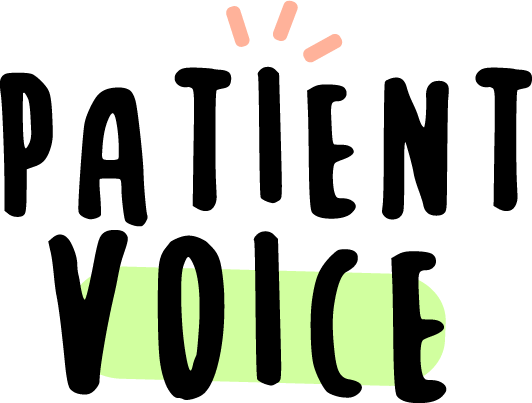
Dr. Mhanni is a Clinician Scientist in the Department of Pediatrics and Child Health, Max Rady College of Medicine, Rady Faculty of Health Sciences, University of Manitoba, and the Children’s Hospital Research Institute of Manitoba (CHRIM).
1. What are long-chain fatty acid oxidation disorders (LC-FAODs)?
LC-FAODs are a group of rare, inherited mitochondrial disorders that affect metabolism and cause severe deficits in energy production. They’re characterized by a disruption in the process that cells use to convert fatty acids into energy called oxidation. These disorders are caused by either a deficiency in crucial enzymes that transport fatty acids into the mitochondria, where oxidation takes place, or by a defect in the oxidation process inside the mitochondria (called β-oxidation). The interrupted process compromises energy levels and results in a build-up of molecules, some of which are toxic at high levels.
These build-ups can cause systemic effects, including low blood sugar levels and low ketone bodies (hypoketotic hypoglycemia); high levels of ammonia, a potent neurotoxin (hyperammonemia); and acid build-up (acidosis) in acute stages. In addition to chronic energy deficiency, patients with LC-FAODs commonly experience heart problems and recurrent muscle breakdown (rhabdomyolysis).
LC-FAODs can affect various patients differently; for example, hypoglycemia (low blood sugar) is a common symptom in young infants and children with LC-FAOD, whereas muscle breakdown is usually something we see in older children and adults with these disorders.
2. How do the various types of LC-FAOD differ from one another?
There are several types of LC-FAODs, which are differentiated according to the enzyme that is deficient in each. The types include carnitine palmitoyltransferase (CPT I or CPT II) deficiency, carnitine-acylcarnitine translocase (CACT) deficiency, very long chain acyl-CoA dehydrogenase (VLCAD) deficiency, long-chain 3-hydroxy-acyl-CoA dehydrogenase (LCHAD) deficiency, and trifunctional protein (TFP) deficiency.
General symptoms of LC-FAODs are similar whether the disorder affects transport into the mitochondria or the process of β-oxidation (the multi-step process where fatty acid molecules are broken down to create energy) inside the mitochondria. All types of LC-FAODs cause complications including low blood sugar, heart problems, and muscle breakdown.
That said, the timing and presentation of symptoms may differ from patient to patient depending both on their type of LC-FAOD and the severity of their disease. Some rare symptoms of LC-FAODs are only seen in certain types; for example, nerve damage and involvement of the retina of the eye are typically only seen in LCHAD and TFP deficiencies.
“In addition to chronic energy deficiency, patients with LC-FAODs commonly experience heart problems and recurrent muscle breakdown (rhabdomyolysis).”
3. How do these disorders impact the lives of patients and caregivers?
Managing LC-FAODs can dramatically impact a family’s lifestyle and cause increasingly life-changing demands. These disorders require families and caregivers to immediately establish and closely follow specific medical diets. When the patient is a child, families and caregivers must monitor the child’s physical activity closely. Caring for individuals with LC-FAODs may require around-the-clock commitment from the care providers to check for signs of hypoglycemia and other dangerous manifestations of LC-FAODs. Many patients need frequent caloric intake and must avoid fasting, including overnight, which can potentially involve the monitoring and maintenance of feeding tubes.
4. When do these disorders present and how are they diagnosed?
Thanks to the implementation of new screening programs, most LC-FAODs are now diagnosed in infants via newborn screening tests. Most episodes present during infancy, but presentation can happen later in life for adults, too.
In adults, the most common presentation is recurrent rhabdomyolysis, but other metabolic disturbances such as raised ammonia levels (hyperammonemia) and an overproduction of acid in the body (acidosis) can trigger further investigations and may lead to a diagnosis. Heart problems can also present at any age, and LC-FAODs are one of the classes of disorders that we aim to rule out early on. As such, doctors and clinicians need to keep a high index of suspicion for LC-FAODs to make sure we don’t miss these diagnoses.

5. What is your advice to Canada's LC-FAOD communities?
There’s power in numbers. As a community of patients, caregivers, and health care practitioners dealing with LC-FAODs, which are rare disorders, we need to stick together. It’s important to note that most discoveries in the treatment of rare diseases have been instigated either by a parent of an affected child or by patient communities and support groups that demand answers and new treatments.
So my advice is that we combine our efforts, both in advancing our knowledge of LC-FAODs and sharing information to empower each other, and also in thinking of new ways of managing these disorders. We also need to work together to raise funds for new research and to advocate for new ways to ascertain these disorders through new methods and newborn screening. We are stronger together.
Living with a long-chain fatty acid oxidation disorder (LC-FAOD) comes with unique challenges. Staying connected to updated information will help focus your efforts on the best possible care. To learn more about the different types of LC-FAOD, visit FAODinFocus.
MitoCanada is dedicated to creating a world where all lives are powered by healthy mitochondria. Present in almost every cell in our bodies, mitochondria are mighty, energy-producing structures that generate the energy we need to survive.
When mitochondria are dysfunctional, the impact on the body can be devastating. If you, or someone you know, is living with, at risk of developing, or believes they may have mitochondrial disease, you can learn more at MitoCanada.org.
This content was supported by Ultragenyx. This page was developed by Patient Voice, and the supporter did not influence the final article or editorial themes of this content.






.jpg)
